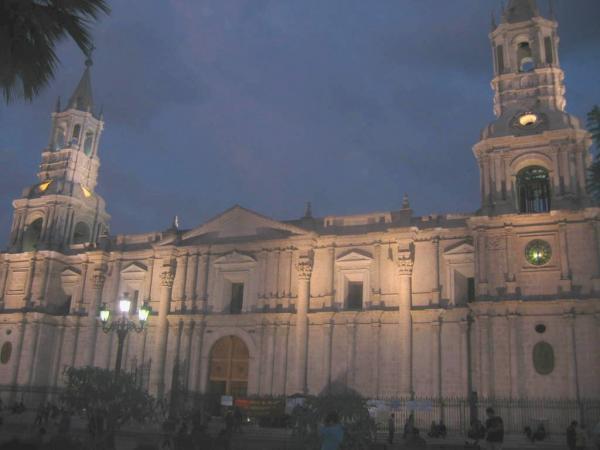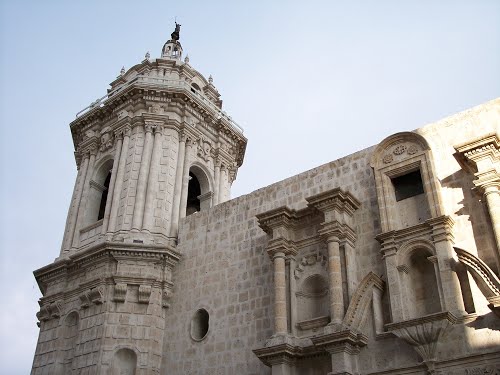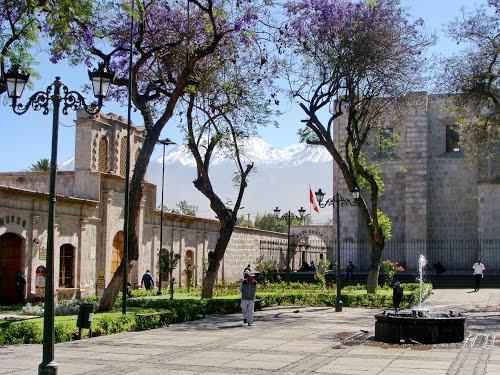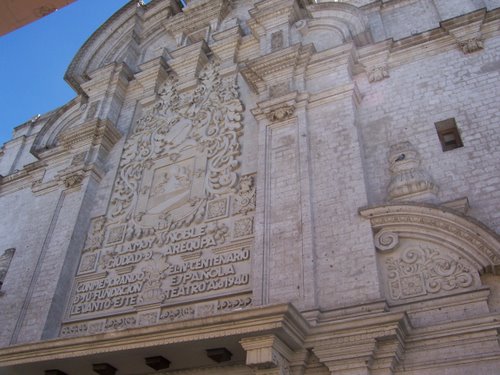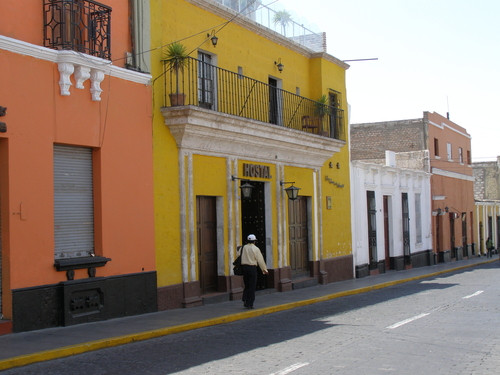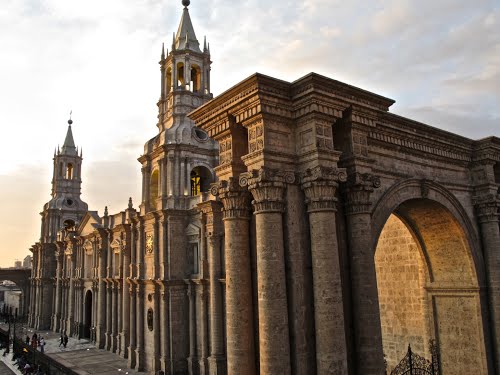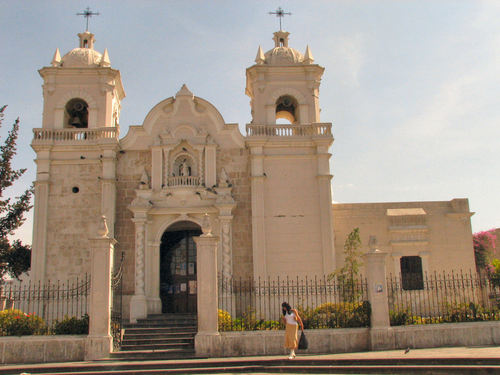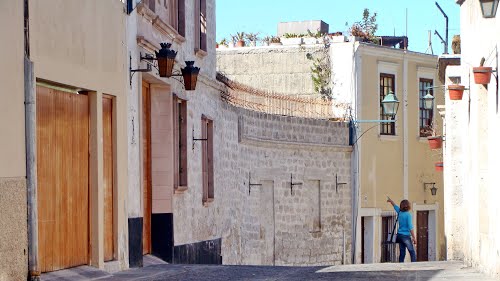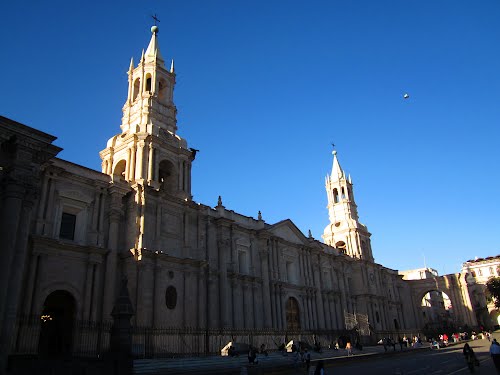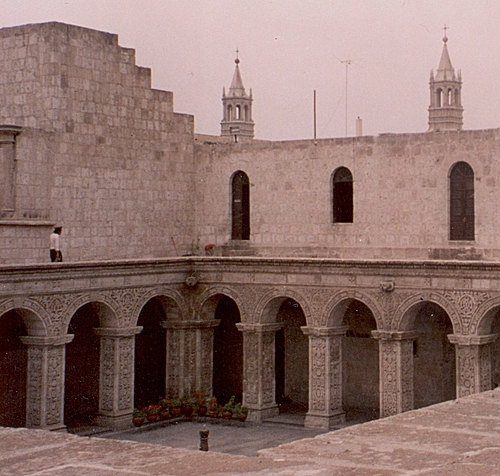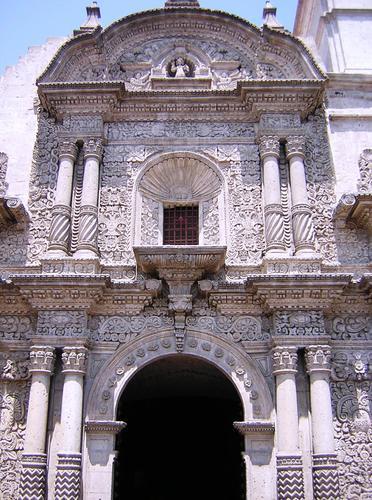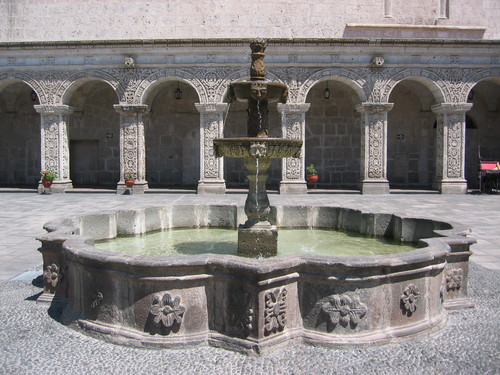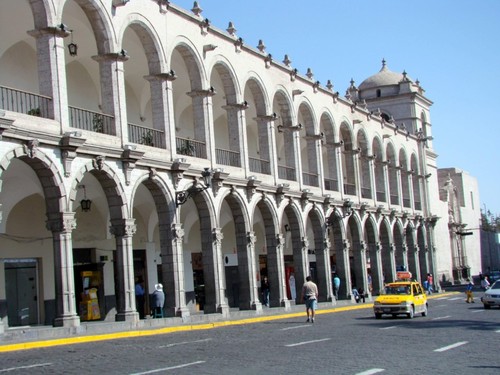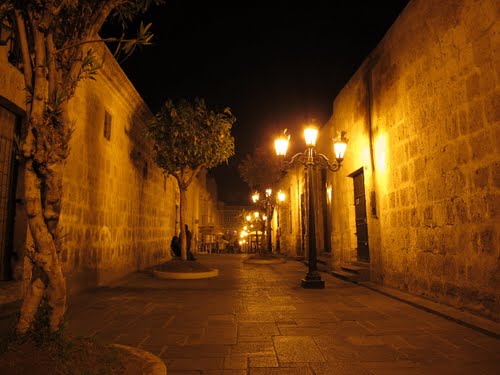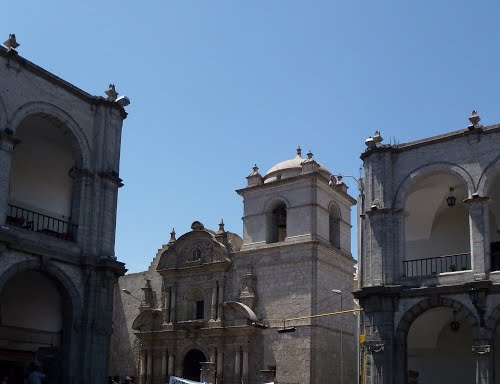The historic centre of Arequipa, built in volcanic sillar rock, represents an integration of European and native building techniques and characteristics, expressed in the admirable work of colonial masters and Criollo and Indian masons. This combination of influences is illustrated by the city's robust walls, archways and vaults, courtyards and open spaces, and the intricate Baroque decoration of its facades.
The historical centre of Arequipa, located in the Province of Arequipa at the foot of three snow-covered volcanoes, represents the integrated response of native hands and building techniques and characteristics with European designs, expressed in the admirable work of colonial masters and native masons. This combination of influences, and the response to an unstable ground due to earthquakes, is illustrated by robust walls, archways, porticos, vaults, courtyards and open spaces, and a strong indigenous influence in the intricate Baroque decoration of its facades.
With its buildings built mostly in white or pink volcanic rock, the historical centre of Arequipa has a distinct character resulting from natural causes and historical context. The pre-existent indigenous populations, the Spanish conquest and the evangelization, the spectacular natural setting and the frequent earthquakes, are all main factors in the definition of Arequipa’s identity. The city is the result of its people's endurance against natural processes and the capacity of cultures to overcome crises. Arequipa was founded in 1540 in a valley that had been intensively farmed by pre-Hispanic communities. The layout of an indigenous hamlet has survived close to the Historical Centre in the district of San Lázaro. The World Heritage site consists of 49 original blocks of the Spanish layout. In addition there are 24 blocks from the colonial period and the 19th century.
Major earthquakes have marked the key moments of change in the development of Arequipa architecture. It is thus possible to identify five periods of development: foundation as a village (1540-82), Baroque splendour (1582-1784), introduction of Rococo and neoclassicism (1784-1868), modern empiricism and neoclassical fashion (1868-1960), and contemporary design. The core of the historic town is the Plaza de Armas with its archways, the municipality, and the cathedral. At one corner of the plaza there are the church and cloisters of La Compañia, the most representative ensemble of the Baroque mestizo period at the end of the 18th century.

